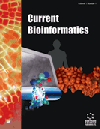
Full text loading...

Alzheimer's disease (AD), a leading cause of dementia, affects millions globally. By 2050, it is expected to impact over 100 million people. Mild cognitive impairment (MCI) is often considered a precursor to AD, but not all MCI patients progress to AD. Therefore, accurately predicting the risk of MCI patients converting to AD is essential.
This study is a cross-sectional study analyzing routine blood test data collected from AD and MCI patients in Hong Kong between 2000 and 2019. To reduce gender and age bias, subjects were divided into four groups. Models were trained using machine learning and routine blood markers.
On the independent test set, the model for females aged 65–74 performed best with an AUC of 0.76. For other age groups, the AUCs were as follows: 0.65 for males aged 65–74, 0.66 for females aged 75–89, and 0.67 for males aged 75–89. Based on this, we developed a platform named MAP (http://lab.malab.cn/~lijing/MAP.html) to predict the risk of MCI converting to AD, assisting clinicians and MCI patients in early diagnosis and prevention.
Routine blood markers combined with machine learning offer a practical, non-invasive approach for predicting the risk of MCI-to-AD conversion. Predictive performance varies by age and gender.
This study supports the use of blood-based machine learning models as cost-effective tools for early AD risk screening in MCI patients.

Article metrics loading...

Full text loading...
References


Data & Media loading...
Supplements